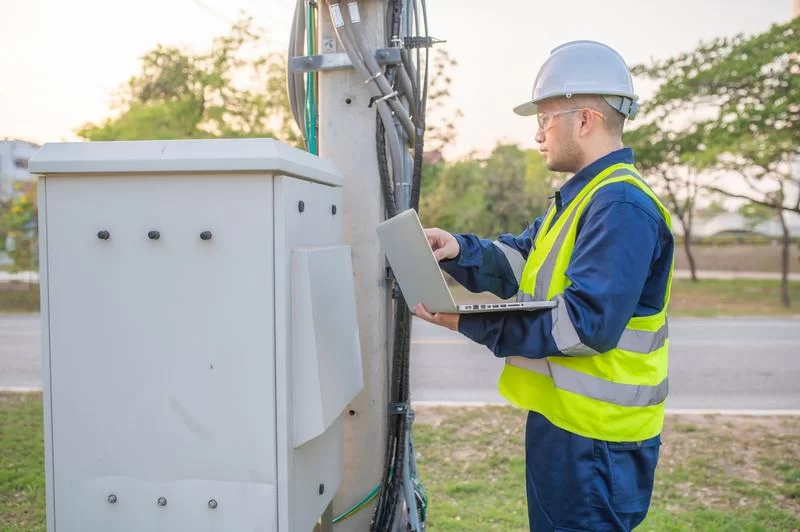Solar-Powered Telecom Tower Systems: A Sustainable Solution for Remote Connectivity

Solar-powered telecom tower systems have emerged as a game-changer for providing reliable and sustainable communication infrastructure in remote areas. As the telecom industry expands, energy consumption and access to power in off-grid locations present significant challenges. Integrating solar power into telecom towers offers a cost-effective, eco-friendly solution that ensures uninterrupted connectivity while reducing operational costs and carbon footprints. In this article, we'll explore how solar-powered telecom towers work, their benefits, and why they're the future of rural and remote connectivity.

The Need for Solar-Powered Telecom Tower Systems
With the growing demand for telecommunications services globally, especially in rural and underserved areas, traditional grid-based energy solutions are not always viable. Solar-powered telecom tower systems provide a reliable alternative, allowing for sustainable energy production and reducing dependence on diesel generators, which are expensive and environmentally harmful.
Target Audience
The primary audience for solar-powered telecom systems includes telecom operators, infrastructure providers, and rural development agencies looking for cost-effective, sustainable solutions for powering telecom towers. These stakeholders are keen on reducing operational costs, enhancing energy efficiency, and ensuring a greener footprint while meeting the growing demand for data services in remote areas.
How Solar-Powered Telecom Tower Systems Work
Solar-powered telecom towers rely on solar photovoltaic (PV) panels to harness sunlight and convert it into electricity. This electricity is stored in batteries, ensuring a consistent power supply even during non-sunlight hours. Telecom equipment such as base transceiver stations (BTS) uses this stored energy to function 24/7.
Key components include:
- Solar panels: Capture sunlight and convert it into electrical energy.
- Inverters: Convert DC power from the solar panels into usable AC power for telecom equipment.
- Batteries: Store excess energy generated during the day for use at night or during cloudy conditions.
- Monitoring systems: Optimize energy consumption and manage maintenance needs.
Benefits of Solar-Powered Telecom Tower Systems
1. Cost-Effective Solution
One of the most significant advantages of solar-powered telecom systems is cost savings. By switching from diesel generators to solar energy, operators can dramatically reduce fuel costs, operational expenditures, and the need for frequent maintenance. Solar systems have a longer lifespan, making them a more sustainable long-term investment.
2. Environmental Benefits
Telecom towers powered by solar energy drastically cut greenhouse gas emissions by reducing reliance on fossil fuels. This is particularly important as telecom operators seek to minimize their carbon footprint in line with global sustainability goals. Solar towers contribute to clean energy initiatives, supporting green energy transitions in developing regions.
3. Reliability in Remote Areas
In regions where grid electricity is unreliable or unavailable, solar-powered telecom towers provide a consistent and dependable power source. This ensures uninterrupted connectivity, which is crucial for communication, emergency services, and economic development in rural areas.
4. Scalability and Flexibility
Solar systems are modular, making them easily scalable depending on the energy needs of a specific tower. This flexibility allows for the seamless integration of additional panels or batteries as energy demands increase, supporting the scalability of solar telecom infrastructure.
Overcoming Challenges in Solar Telecom Towers
While solar-powered telecom towers offer numerous advantages, they do face challenges such as high initial investment costs and the need for regular maintenance of solar panels and batteries. However, advancements in energy storage and panel efficiency are rapidly reducing these barriers. Additionally, governments and telecom operators are increasingly investing in solar solutions to ensure sustainable telecom infrastructure.
Future Trends in Solar-Powered Telecom Systems
As technology advances, the efficiency of solar energy systems continues to improve. Innovations such as hybrid energy systems, which combine solar with wind or battery backup solutions, are gaining traction. These systems ensure even more reliable power generation, making solar telecom towers a viable option for regions with fluctuating sunlight conditions.
Moreover, smart grid integration and remote monitoring technologies are being developed to optimize energy use, predict maintenance needs, and enhance the overall efficiency of solar-powered telecom towers.
Conclusion
Solar-powered telecom tower systems represent the future of sustainable communication infrastructure, particularly in remote and off-grid regions. By reducing costs, improving energy efficiency, and supporting environmental goals, these systems provide a reliable solution for modern telecom needs. To explore how our solar telecom solutions can benefit your network, visit our solar-powered telecom solutions page and discover the potential of solar energy for your communication infrastructure.
FAQs
- How do solar-powered telecom tower systems work?
Solar-powered telecom towers utilize solar panels to convert sunlight into electricity. This energy is stored in batteries, which power the telecom equipment around the clock. - What are the advantages of using solar power for telecom towers?
Solar-powered telecom towers reduce operational costs, cut carbon emissions, and provide reliable energy in remote areas where grid power is unavailable or unreliable. - Are solar-powered telecom towers scalable?
Yes, solar-powered systems are modular and scalable, allowing operators to add more solar panels or battery storage as energy needs increase.
